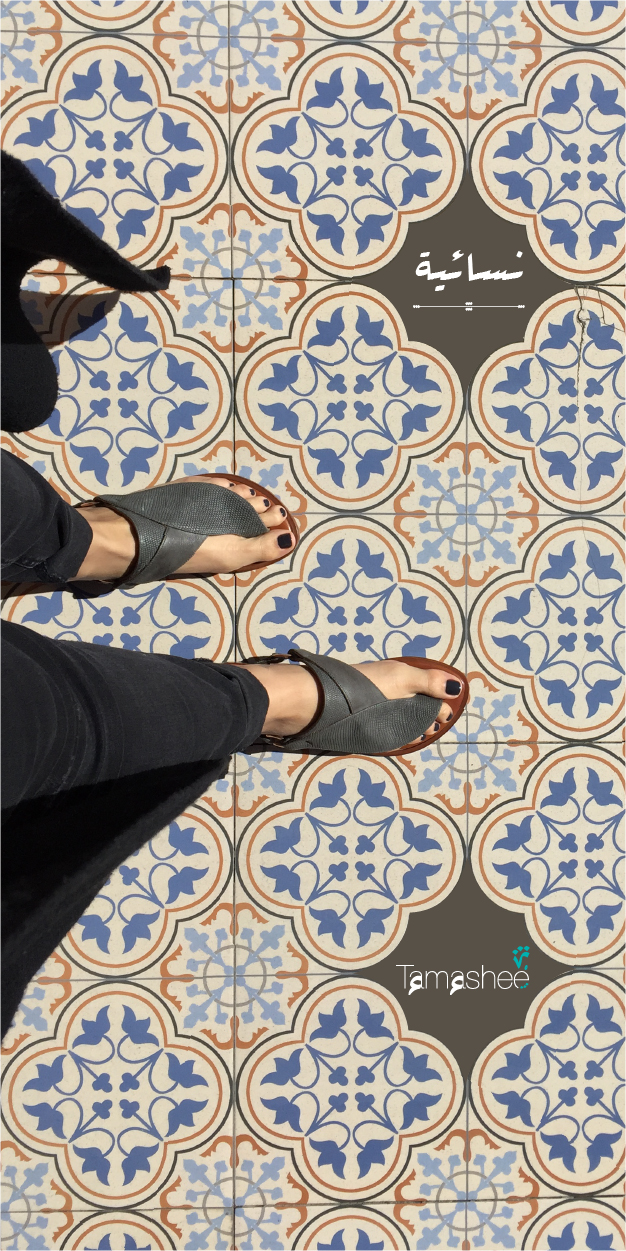All of us are used to seeing the same images of Iraq, particularly of Baghdad in the mainstream media. Exploding buildings, derelict streets, poverty. Although these images of a war-torn country are a reality, they aren’t the only images we should know Iraq for.
It’s easy to forget that Iraq and Baghdad in this case has been a space where a plethora of great thinkers and artists have created unforgettable structures which still stand despite the destruction and chaos surrounding them.
Sumaya Al-Naqshabandy, a 21-year-old Civil Engineer attending Al-Mustansirya University of English in Baghdad has made it her mission over the last four years to record some of these beautiful structures.
“Every time I walked around old Baghdadi streets, I see all the history we have and I want to share it in a beautiful way to make us, especially young people, know the hidden value of our country,” Sumaya told The Arab Edition.
From old streets, houses, castles, mosques and churches, Sumaya known on Instgaram as @sumayibahaa documents these outstanding structures using nothing but her phone – an HTC 10. Sumaya has also created the hashtag #mybaghdad to share these images with the world, reminding us that Baghdad is a city whose value and cultural history is rich and needs to be preserved.
Read our short interview with Sumaya below along with the photo story we created with commentary from her about each image.
Is it safe for you to walk around Baghdad to take these photos?
Not always. I do it with my family often, either with my brother or mother. Sometimes the security guard of a building won’t give me permission to take photos. Actually people always get surprised and afraid of me when I hold my phone and try to take photos of an old building.
Why did you start the hashtag #mybaghdad?
Actually I was jealous that every city has its own hashtag to show off their streets and buildings. I started to think, why don’t we have a hashtag to show the hidden beauty that our eyes see here in Baghdad? I want people to know that we have history to show.
What makes you want to take a photo when you see a house or building?
I studied architecture engineering for a year and then left to study civil engineering. Studying architecture helped me to see a building’s value (especially historical ones). You can see the past and treasure of a city through its architecture. You can see the past in front of your eyes. Baghdad’s streets are like a flashback of all the good days Baghdad has lived. Architecture can tell stories and stories of important events in Iraqi history. Every time I walk with my father in the old streets, he keeps telling me how the buildings were beautiful before they were damaged by years of war. Baghdad also has a lot of buildings designed by famous foreign architects and this was another reason that made me look for old buildings each time I walked the streets.

This is an old house in the Hasan Basha neighbourhood, an are filled with a lot of old alleys and old Shanasheel houses.

This is also in the Hasan Basha neighbourhood, in front of Al-Sari mosque a place called The Ottoman Palace.

Known as the Baghdad Tourist Island, this building was established by a Finnish company in 1983. It’s such a nice place to ride bikes or for families to come and have picnics.

The Al-Qashla Clock Tower, was built by the governor of Baghdad, Muhammad Namq Pasha, in 1850 AD. The building was completed by the governor of Medhat Pasha, who built the four-faceted Qashla watch and built a tower to awaken the soldiers and inform them of military training times. The Qishla Square witnessed the crowning of the first King of Iraq in the modern era, King Faisal I Ben Al Hussein in 1921.

Al Mutanabi Street is the best place to find books (old and new) in Baghdad. It gets very crowded on Friday mornings, a day when it has become a ritual for Baghdadians to attended. Usually you can find seminars and cultural gatherings there too.

The Statue of Al Mutanabi the famous Arab poet.

An old damaged house in Al Rasheed Street.

Another building in Al Rasheed Street.

A view of the Al-Alawi area, where you can see the Iraqi Railway Company. We call this area the heart of Baghdad because there is a lot of government institutions and departments, as well as a lot of street vendors and stalls.

An old house in Abu Nua’s Street. This area overlooks the Tigris River has a lot of old houses. The neighbourhood of Abu nua’s has two famous statutes of Shahraier & Shahrazad the famous couple from the Thousand and One Nights folk tales.

The palace of Rasheed Alkailany, Prime Minister of Iraq during the royal era.

A view of the beautiful river Tigris.

A gate in Murjan Mosque in Al Rasheed Street. The Murjan Mosque was built in the Ottoman style and had a school inside called The Murjania where religion was taught. It was built in 1356 and constructed by one of the Galilean princes.

The Church of St. Mary in Al-Maydan square. People say its the oldest church built in Baghdad in 1604.







